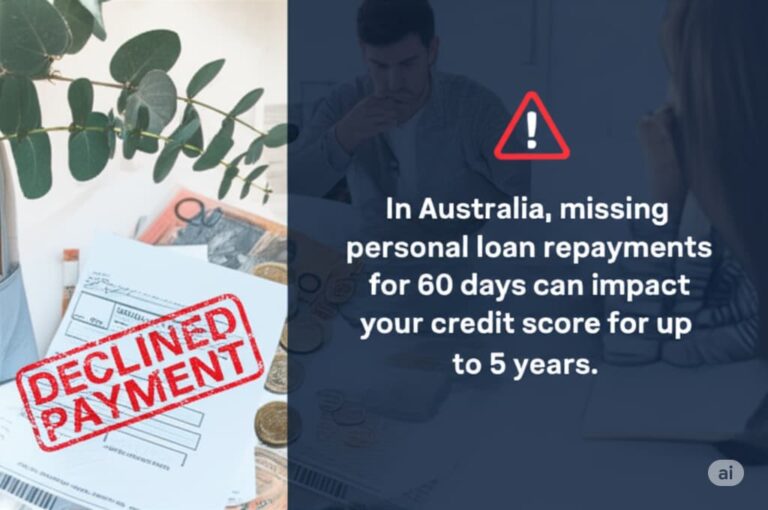Imagine this. You’re managing your everyday expenses, keeping up with bills, rent, groceries, and suddenly a personal loan repayment slips through the cracks. Or maybe you lose your job or face an emergency, and the repayments start piling up. It’s stressful. But you’re not alone. In 2025, the financial landscape in Australia continues to evolve, but one thing remains clear—missing repayments, known as default in personal loan in Australia, can seriously affect your financial health. But here’s the good news: you can overcome it, with the right knowledge and support.
Let’s take a simple, honest, and clear look at what happens when you default and how you can bounce back.
What Does Default in Personal Loan in Australia Mean?
A default in the context of personal loans simply means failing to meet your loan repayment obligations as agreed with your lender.
In Australia, under the National Credit Code, a default typically occurs when:
- You’ve missed a repayment by 60 days or more, and
- You owe at least $150.
Once this happens, your lender may issue a default notice, giving you 30 days to fix the issue. If unresolved, it can be reported to credit bureaus like Equifax, Experian, or illion.
Immediate Consequences of Defaulting
Let’s break down what happens step-by-step if you default:
1. Default Notice is Sent
You’ll receive a formal notice warning you of the default. It outlines what you owe and gives you 30 days to catch up.
2. Credit Score Takes a Hit
If not resolved, the default is reported and recorded on your credit file for five years. This lowers your credit score and affects your ability to borrow in the future.
3. Late Fees & Interest Pile Up
Additional charges are added, making the debt bigger and harder to manage.
4. Debt Collection Begins
If unpaid, the lender may hand your debt to a collection agency or take legal action. This could mean court orders, garnished wages, or asset seizure.
5. Emotional & Mental Stress
Dealing with financial pressure often impacts mental health. Many Australians report anxiety, shame, or even depression tied to money problems.
Real-World Example
Take Jasmine, a part-time hospitality worker in Melbourne. She took a $6,000 personal loan to cover moving expenses. But when her job hours were cut, she struggled to make repayments. After two months, she received a default notice.
But instead of ignoring it, she contacted her lender, negotiated a hardship variation, and was able to pause repayments for two months. With Centrelink assistance and part-time shifts, she slowly got back on track.
Moral of the story? You can recover.
Legal Protections and Your Rights
In Australia, borrowers are protected under:
- National Consumer Credit Protection Act 2009
- Australian Financial Complaints Authority (AFCA)
You have the right to:
- Be treated fairly.
- Request hardship assistance.
- Dispute unfair treatment or errors on your credit file.
How to Overcome a Default in Personal Loan
Here’s the friendly, practical guide:
Step 1: Don’t Ignore It
The worst thing to do is nothing. Contact your lender as soon as possible. Most lenders are more willing to help if you’re upfront.
Step 2: Ask About Hardship Plans
Many lenders have hardship programs if you’re facing illness, job loss, or family breakdown. This could include:
- Payment pause (up to 3-6 months)
- Reduced payments
- Loan term extension
Step 3: Review Your Finances
Create a simple budget:
- What’s coming in? (wages, Centrelink, family help)
- What’s going out? (rent, utilities, groceries)
Use free tools like:
- MoneySmart Budget Planner
- ASIC Financial Calculator
Step 4: Seek Financial Counselling
Services like:
- National Debt Helpline (1800 007 007)
- Financial Rights Legal Centre
They offer free, confidential advice on negotiating with creditors or applying for hardship.
Step 5: Consider a Debt Agreement
If the debt is unmanageable, you can explore formal options like:
- Debt agreements under Part IX of the Bankruptcy Act
- Personal insolvency agreements
These should only be considered after speaking with a licensed debt adviser.
How to Rebuild After a Default in Personal Loan
Even with a default on your file, it’s not the end.
1. Start Paying Regularly
- Making small, regular repayments—even $20 a week—can show lenders you’re responsible.
2. Avoid New Debt
- Focus on clearing old debts before taking on new loans.
3. Use a Secured Card or PayPal for Small Purchases
- Helps build a positive credit trail.
4. Monitor Your Credit Report
- Get one free credit report per year from Equifax, Experian, or illion.
5. Save an Emergency Fund
- Even $500 in emergency savings can keep you from defaulting again.
Useful Statistics
- 1 in 6 Australians struggle with repayments, according to the National Debt Helpline (2024).
- Credit defaults rose by 12% in 2023, mainly due to inflation and rising living costs (Equifax).
- Only 35% of people facing financial stress contacted their lender early—those who did had better outcomes (ASIC).
Why This Matters in 2025
With inflation, rental hikes, and job insecurity still affecting many Australians, understanding how to handle default in personal loan in Australia is more relevant than ever.
Even small changes—like reaching out early, learning your rights, and budgeting—can mean the difference between drowning in debt and getting your life back on track.
Final Thoughts: Don’t Let One Mistake Define You
If you’ve missed a loan payment—or think you might—know this: it happens to thousands of Australians every year. The key is to act, not avoid.
Reach out. Ask for help. Learn your options. And take it one step at a time.
Remember, financial recovery is a journey—and you don’t have to walk it alone.
References
- ASIC’s Moneysmart – https://moneysmart.gov.au
- National Debt Helpline – https://ndh.org.au
- Equifax Credit Reports – https://www.equifax.com.au/personal
- Australian Financial Complaints Authority – https://www.afca.org.au
- Financial Rights Legal Centre – https://financialrights.org.au



